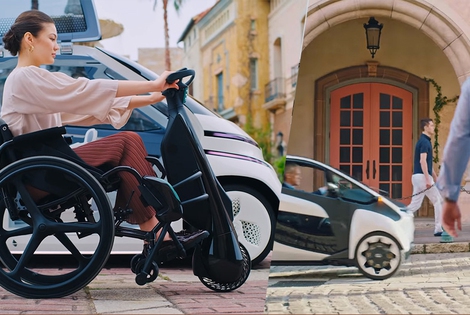
Milan has announced one of Europe’s most ambitious mobility schemes, known as Strade Aperte (open roads). Its goal is to reduce cars in phase 2 of the lockdown by increasing bike lanes and pedestrian areas.
From 2017 a new sustainable ferry boat will sail across the Baltic Sea. It will be powered by LNG, reducing consumptions and emissions of pollutants.
Designed by AS Tallink Grupp and Meyer Turku Oy, the new sustainable ferry boat will link Tallinn, in Estonia, to Helsinki, in Finland. It will be 212 metres long, with a tonnage 49,000 tons and will carry 2,800 passengers.
The ship will be powered by a dual fuel engines, and will also be fuelled by liquefied natural gas (LNG). It is designed to reach 27 knots and to sail also in case of frozen sea. The company estimates that 230 million euros will be invested for its construction and about 2,000 workers will be employed.
Thanks to liquefied natural gas, the ship will comply the recent International Regulation on Ship Emission, which sets the maximum sulphur contents in fuel oil within the ECA area (Emission Control Area) to 0,1%. This area lies within the borders of the Baltic Sea, the North Sea and the English Channel up to Falmouth.
LNG will be stocked in two tanks designed by Linde, a German company which will provide this low-carbon emissions fuel. “When designing the new LNG-powered ferry, we selected world-class solutions and suppliers that will make the vessel environmentally sustainable throughout and operationally efficient for many years to come, “said Tarvi-Carlos Tuulik, Head of Ship management from AS Tallink Grupp . “As the market leader in the Tallinn-Helsinki route, we are proud to set the standard for the next generation of passenger ferries.”
According to themeditelegraph estimations, using LNG as large ships fuel would reduce CO2 emissions by 20%. However, today there are only 40 ships around the world using that kind of fuel.
Siamo anche su WhatsApp. Segui il canale ufficiale LifeGate per restare aggiornata, aggiornato sulle ultime notizie e sulle nostre attività.
![]()
Quest'opera è distribuita con Licenza Creative Commons Attribuzione - Non commerciale - Non opere derivate 4.0 Internazionale.
Milan has announced one of Europe’s most ambitious mobility schemes, known as Strade Aperte (open roads). Its goal is to reduce cars in phase 2 of the lockdown by increasing bike lanes and pedestrian areas.
Formula 1, the world’s most important auto racing championship, has decided to turn the page and aim for carbon neutrality with the support of its teams, drivers and the whole racing circus.
Toyota and LifeGate began telling the story of hybrid mobility back in 2006, now, on the road to the Tokyo 2020 Olympics, they’re still treading the path of sustainable mobility. Here are the main steps of the journey.
Germany’s first solar bicycle lane could be the prototype for the roads of the future. The photovoltaic tiles melt snow and ice, and are capable of absorbing noise.
The Vespa is back in an electric version. Production has just started and the first models can be reserved online starting from October.
The city of Utrecht, in the Netherlands, is home to a bridge for cycling and walking that stretches over roof garden of a Montessori school. This project enhances practicality and will allow families to bring children to school by bike, passing through green areas. Despite their functionality, bridges are often seen as an infrastructure that is
The Lego hair bike helmet is the latest Internet craze. For now it’s just a prototype but production on a large scale will probably start soon.
Just as fires often give way to new growth, after the Dieselgate scandal, which saw Volkswagen cheating on US emission rules, the German car manufacturer radically changed course, beginning to focus on sustainable mobility. The German car company aims to propose thirty zero-emission models and produce at least one million battery electric vehicles by 2025. An ambitious mission
Sustainable, two-wheel mobility is triumphing in Copenhagen. After years of investments, policies, and infrastructural changes, bikes now outnumber cars in the city centre. The website Copenhagenize has released data linked to the number of vehicles entering the city centre, which are monitored by the city’s administration on a daily basis. Last year, 265,700 bikes have entered







